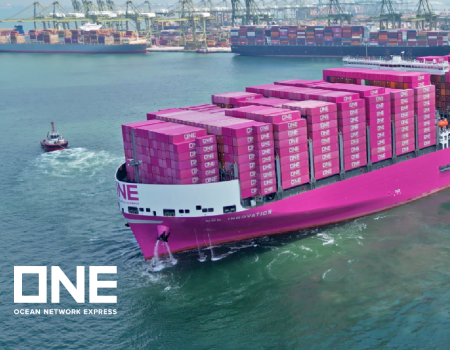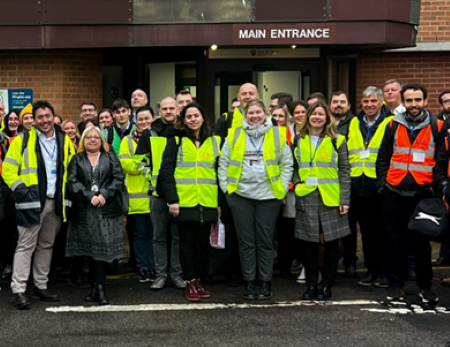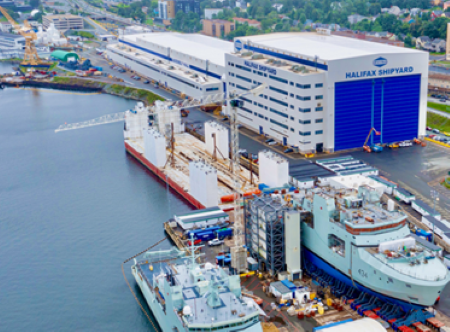Max Carling, Managing Director of Guernsey-based Levaton Platforms, tells ITM about how his company can help shippers minimise the age-old problem of damage in transit
The motivation behind what we do comes, ultimately, from my irritation at seeing damage. So many people put so much effort into producing products, or finishing cars, and it is absolutely mortifying, in my view, to see all of that effort wasted because during the course of the journey the item has been wrecked and has to go back to the manufacturer for repairs. We didn’t want to reinvent the container, but we felt that inserts into the existing containers would be a cheaper option for the service provider. We could come up with a number of inserts that could go into an ISO. Our parent company is called Protective Transport Systems and, as the name suggests, we want to come up with protective systems that go into containers to protect whatever it is that’s being transported.
In my previous work, I shipped cars to and from the UK from the Channel Islands. Whether it was a car going to Southampton airport so its owner could drive it when they fly in from Jersey, or a new car being sent to its new owners in Guernsey from Edinburgh, it was always vital not to bend it! What we came up with originally was a wooden platform that could happily sit in a dock and put up with the sort of tender loving care that dock workers love dishing out. The Achilles heel of the wooden platform was the way it tapered down to a very thin edge. It was clear that that edge would, over time, rot away or grow weaker or whatever. Since then, we’ve gone through various evolutions of the platform and ended up at the one we’ve got now.
The current steel one has been very well received by companies such as Huelin Renouf, and we’ve recently had a very encouraging conversation with the military, who are just across the Solent from Southampton docks, about using the platform in places such as the Falklands and
Obviously, shippers don’t tend to use containers to transport cars as much any more; they use roll-on-roll-off ships instead. Nonetheless, they do often transport large bits of equipment. In the same way that you can weld a mounting onto a ship’s deck, you can do the same with our all-steel platform. For instance, if the army are looking to ship a multi-million pound tank engine, the last thing you want is that rolling around in the container and ending up with a ball of aluminium foil at the end.
The stumbling block, if we have one, is the investment in the all-steel, all-singing, all-dancing platform. For us to make even a modest margin on it, by the time it’s delivered and one thing and another, you’re looking at around the £6,000 mark. Companies such as Huelin Renouf, who have got a closed loop, will find it ideal. As they’re only operating between Guernsey, Jersey and Southampton, the platform goes round and round in a loop. If they lose it in, say, Jersey, and they can’t find it in Guernsey, then they know it must be in Southampton. It’s easily retrievable. Larger companies can’t run the risk of losing a platform.
As well as coming up with our own ideas, we like to listen to what others have to say. What we’ve heard is that people are looking for ‘one-shot’ loading – they fully understand the benefits of being able to load something outside of the container, instead of having to rely on a half-dozen stevedores with a couple of bits of wood and a forklift. I’ve always been of the belief that if you can load something outside the container, you’ll do it well. As I said before, our whole ethos is protective transportation and minimising damage in transit. When you speak to insurance companies it really is galling to hear some of the stories. It’s not so much the damage itself, it’s all the other stuff that surrounds it – the disappointed recipient, perhaps a building programme falling behind schedule because of one broken part, things like that. So we’re trying to stop things like that, and if we can fly the
It’s quite a simple idea, but we like to think it’s massively effective. I once saw an Austin Healey being loaded into a container in Southampton. The stevedores had got a piece of four-by-two, cut it approximately to size and wedged one end against the wheel, then hammered the other end into place with a four pound lump hammer, to make sure the piece of wood was nicely jammed between the side of the container and the wheel to stop the car sliding around. The chances of that wheel being straight when they came to unload it were minimal. The person transporting it is looking to protect his pride and joy, and it ends up getting bent out of shape in the process. How gutting must that have been! No disrespect to the guys who work at the docks, but if they’re presented with a prefabricated idea and told how to use it, then they’ve got more chance of success than just being told to ‘put that car in that container’.
If you know as a manufacturer that you have to allow for some loss or damage in transit or some disruption at the other end, then you’ll probably be looking around for alternatives. If you can find a solution, and can be sure that once you close the container doors the cargo isn’t going to move around and get broken before it reaches the other side, then you’re going to stick with it. We want to be in the position where a shipping company, a freight forwarding company, manufacturers, and so on, can come to us and be confident that they won’t have any losses en route. We’re dealing with Cummings generators at the moment, and they do not want all the problems that they have suffered through their units getting damaged. Their products are going far and wide – to Somalia, South America, India – and if their piece of kit is on a stable and secure platform, it means that when it gets to the destination, even if there is not particularly suitable lifting equipment at the dock, the platform might get damaged but their kit won’t be. I’ve spent some time working at a dock and the number of times I saw something standing still for the sake of £5-worth of components was shocking – you want to get into the position where people can only handle something the right way. To be giving people a piece of wood and a hammer and telling them to secure the load is just crazy. You have to remember as well that they’re not employed to be fitters and joiners, making elaborate things out of wood. They’re paid to put things into containers. Our platforms make it easy for them to do their jobs.
At the moment, our future plans involve tailoring our solutions to the needs of the market. We would love to encourage the market to come to us with their problems and tell us what they want. People put so much thought into the products they’re making, but it seems that there’s a gap between the end of the production line and the closing of the container doors. Maybe they don’t see the damage at the end, but it’s very real. Often people open doors at the end and just thing, “no point unloading it, just call the insurers.” In the long run, transporting goods using our secure methods saves money – it’s a lot cheaper to hire a platform than it is to pay to get a scratch taken out of a Ferrari, for example!
As Steve Champion-Smith from Heulin Renouf has said: “In the future, there will be two types of container shippers: Those who are using Levaton products, and those who aren’t. And we all know who will get the business.”







